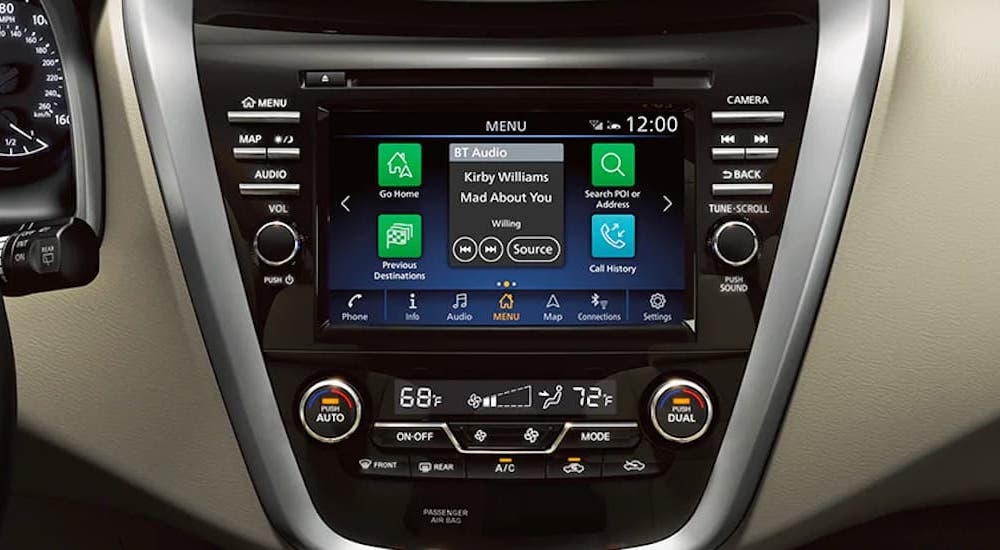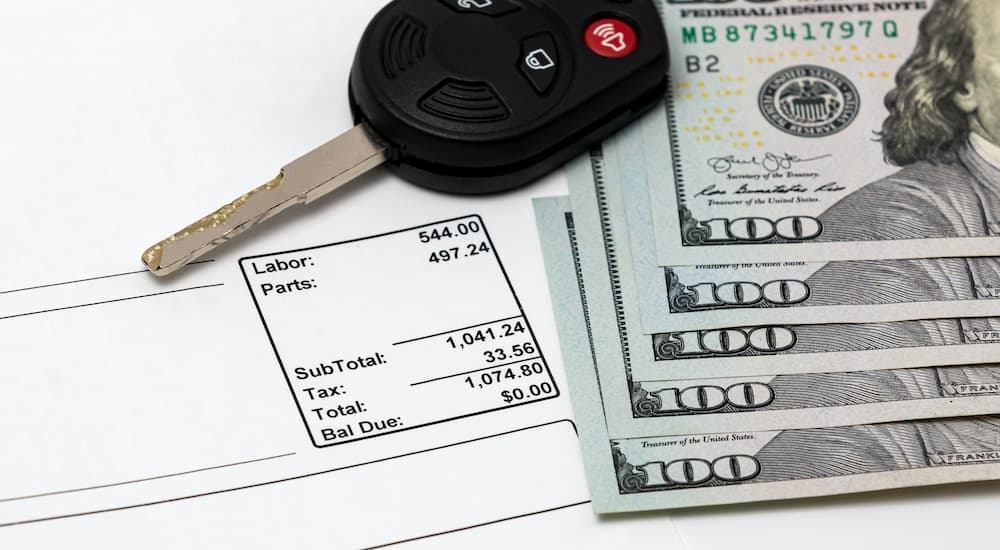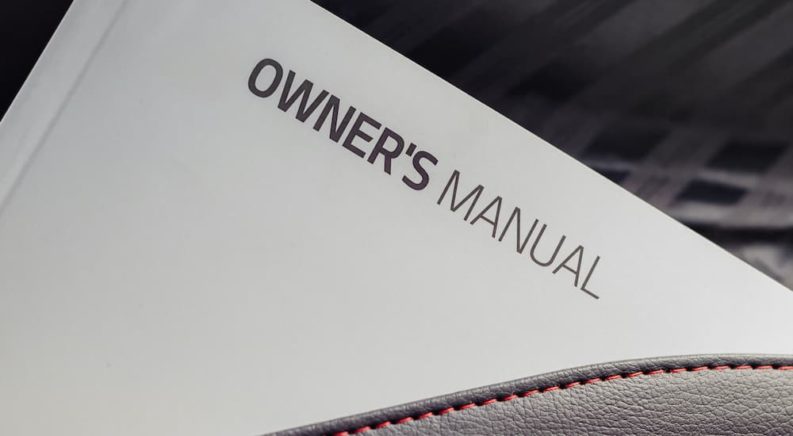The owner’s manual is your vehicle’s Rosetta Stone, an all-in-one guide covering details like how to pop the trunk to technical specs and everything in between. Though we understand the urge to stuff it in some deep, dark corner of your glove compartment and get to know your new vehicle from behind the wheel, a little study session with your owner’s manual could end up preventing a lot of headaches down the road. Written for your specific make and model, the owner’s manual is a repository of tips, tricks, and features that you might not stumble on in the course of everyday driving. No one expects you to cozy up by a roaring fire and read the manual cover to cover as soon as you get home from your Certified Pre-Owned Nissan dealership, but if you’re only going to give it a quick glance, there are a few sections you’ll be glad you didn’t skip should you find yourself in an emergency. Let’s look at some of the most helpful sections of the driver’s manual, what to always read, and other important vehicle-related documents.
Must-Read Sections
The entire manual is a handy resource, but if you’re the Cliff Notes type, there are a few sections that warrant special attention. We’ve outlined some of the most useful sections in the typical drivers manual, though we recognize they might vary widely among different vehicles. If you’ve misplaced the manual over the life of your vehicle, or it didn’t come with one to begin with, a quick web search should easily turn up a pdf version that you can view on your phone or home computer.
Setup
Stepping behind the wheel of a new vehicle can feel like wearing a new pair of shoes. It’s a familiar feeling, but everything is just a little…different than you’re used to. Accelerate that acclimation process by studying your manual you’ll have your new wheels “broken in” in no time. Newer vehicles have some impressive customization options, allowing drivers to set everything from interior lighting and keyless entry to seat settings and stereo volume threshold. Want to deactivate the horn that comes with remotely locking your vehicle or just set all your favorite radio stations? This is the place to start.
Maintenance Schedule
The maintenance schedule in your owner’s manual is designed to keep the vehicle operating at its best, providing drivers with a timeline for when to do everything from replacing filters and checking brakes to rotating tires and topping off fluids. While we’re all familiar with the general guidelines around, say, when to change your oil, the maintenance schedule is designed with your specific make and model in mind and could very well hold a few surprises. Some newer vehicles might need less regular maintenance than the ‘84 clunker you inherited from your dad, so familiarize yourself with the convenient table which outlines when maintenance should be performed based on certain mileage milestones.
Take Note
The maintenance schedule can even vary for the same vehicle depending on its level of use. Vehicles that rack up significant mileage over a short period – company cars and fleet vehicles, for example – and those driven in harsh, dusty conditions might well need to follow a “severe” maintenance schedule as outlined in your manual. Stick to the maintenance schedule, and your vehicle will return the favor, operating at its best and saving you money on costly repairs while at the same time improving your vehicle’s resale value.
Warranty
This is one document you should really take the time to study up on. Many of today’s new vehicle warranties are quite generous in their coverage, typically offering a bumper-to-bumper warranty for the first few years as well as an extended powertrain warranty. Most mechanics outside of the dealership aren’t going to bend over backward to check if a repair is covered by the warranty, so before you blindly say yes to a big job, make sure it’s not something that the manufacturer would fix for free.
Cleaning Instructions
This might seem like a minor detail, but if you take pride in your vehicle’s appearance, it shouldn’t be skipped over. Many newer vehicles use a variety of materials throughout their interior and exterior, some of which might call for specific cleaning supplies or techniques. This is especially true of the interior upholstery, with many manufacturers introducing their own proprietary materials which may require a new approach.

Infotainment System
There have been countless advances in automotive technology over the last decade, but perhaps nowhere more so than your vehicle’s dash. Once content to sport a radio, clock, and maybe a compass, today’s dash-mounted infotainment systems have upped the bar significantly. Essentially an in-car computer, your infotainment system might be able to do everything from make phone calls and provide directions to order your dinner or stream content, but you’ll never know unless you dive into the manual. While you’re bound to stumble across some of the more obvious features, such as hands-free calling and GPS, your infotainment system could well be hiding some tricks up its sleeve. Some manufacturers take pride in hiding secret features throughout the system, but usually, these oversights come down to a case of poor user interface design. A little time with the manual should help you start unlocking the secrets and get the most out of your infotainment system.
Buttons, Dials, and Switches
Much like the infotainment system, your vehicle could well be hiding intriguing features in some unexpected places. While most of your dash- and center console-mounted buttons and dials are going to be clearly labeled, some less obvious features might go unnoticed. You don’t want to be two years into ownership before realizing you could have had lumbar support this whole time.
Dashboard Lights
Those dashboard hieroglyphs are usually pretty easy to interpret, but every vehicle has its own peculiarities. Familiarizing yourself with the dashboard lights and icons won’t only make it easier to interpret feedback from your vehicle but could prove a vital safety measure should something go really wrong. For example, many check engine lights will illuminate if there is a minor to moderate issue, but when they start to blink, it’s time to pull over ASAP, as this could signal a problem that could have a lasting impact on your engine or some other vital components. Keep in mind that we’re using the term “lights” as a generality, as many of today’s vehicles have replaced the traditional backlight icons with full-color displays. These usually take a lot of the guesswork out of the alert process but can still take a little time to get used to.
Other Important Documents
Your glove box isn’t just a good place to lose your sunglasses; it’s your mobile filing cabinet: the perfect place for your manual, registration, and any other documents related to the vehicle. Below we’ve listed a few documents you should always keep in your vehicle and which ones you should leave at home.
Proof of Insurance
Proof of insurance is often the first thing you’ll be asked for after license and registration should you ever find yourself in a traffic stop. Most insurance providers offer smartphone apps or websites where drivers can pull up their insurance information, but it’s always best to keep a hard copy on hand in the glove box should you ever find yourself pulled over in an area with poor cell reception. Some officers might be understanding, some might not, but it’s never fun to be searching for bars when you’ve got a sheriff’s deputy over your shoulder.
Repair Receipts
Another good habit to get into is keeping all repair-related receipts in the glovebox. Knowing exactly when repairs were completed and what specific work was done could come in handy for future maintenance and can provide a real edge when it comes time to sell a vehicle as it’ll signal that the vehicle was well-cared for during your ownership.

Important Medical Information
It’s never a bad idea to stash away a small notecard listing emergency contacts, medical history and conditions, and any other information you’d want on hand should you find yourself incapacitated behind the wheel.
NOT Your Title
It’s tempting to keep all your important documents in one place, but there’s one notable exception: never keep your vehicle’s title in the glove box as it could present some real issues were the vehicle ever to be stolen or go missing. If a car thief ends up with your stolen title, they could easily pass it off as theirs when reselling the car, or you could find your information attached to a different stolen car, causing you a lot of grief further down the road. This is essentially your vehicle’s birth certificate and, as such, should be secreted away with all your other important documents in a fireproof storage box inside your house.
Read Your Manual So You Know Everything You Need to About Your Car
While not the world’s most gripping read, your owner’s manual might end up being one of the most important books you’ll ever pick up. Filled with tips and tricks, FAQs, and the all-important maintenance schedule, familiarizing yourself with its contents is one of the easiest ways to gain a better understanding of your new vehicle. This could be something as simple as a diagram that helps you figure out how to operate the always-mystifying power side mirror to warranty information that could save you the cost of a new transmission. The internet can be a great resource for tracking down common automotive issues, but with designs varying so widely between makes and even different generations of the same model, your owner’s manual is an easy way to cut through the noise and pinpoint information specific to your vehicle. Frantic Google searches and how-to YouTube videos have their place, but sometimes there’s nothing quite as easy as going analog.

